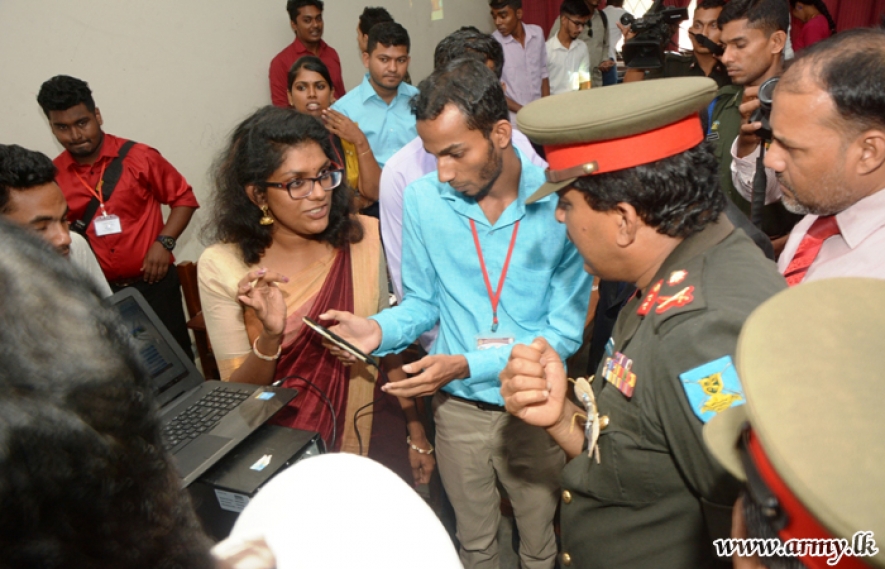The United States (US) has been proactive in conducting many Humanitarian Assistance & Disaster Response (HADR) training programmes, exercises and engagements with militaries, governments and NGO’s in the region The latest of which kicked off on August 6, in the Anuradhapura and Vavuniya Districts. Named Pacific Angel 2018 (PACANGEL2018), this engagement is an annual joint HADR effort organized by the United States Air Forces’ Pacific Command and the Sri Lanka Air Force (SLAF), with multinational partners from Nepal, Bangladesh and the Maldives. PACANGEL is in its 11th year and has been conducted in Sri Lanka 4 times.
Speaking to the media at the Medical outreach site in Alagalla, US Chargé d’Affaires in Sri Lanka, Robert Hilton said PACANGEL affords the US, Sri Lanka and regional partners to build interoperability, to work together better as partners and be better prepared for natural disasters and humanitarian operations. He thanked the US military personnel, the SLAF, partnering nations, the government and NGO’s who took part in PACANGEL 2018. “…building those bonds between people which we think is so important..” he added.
Sixty-five military personnel from the USAF, USNavy, USMarines and USNational Guard trained with their SLAF counterparts and shared best medical practice with government medical professionals, Non-governmental organisations and volunteers. A Health Outreach programme in the form of Clinics was held at Alagalla MV, Vavuniya, which drew a large number of villagers. The clinics were jointly staffed and included Dental, Optometry, Paediatrics, General and Family Health Services. H.M.D. Senarathna, a resident of Katuwella, Madawachchiya, claimed that, many of those who visited the Clinics were from rural communities, who did not have adequate access to specialist care in their locality. He was one of the many waiting in line to seek treatment.
According to USAF Maj. Sierra Nunez, the Medical Outreach programme had treated more than 1,000 patients on Saturday (18), many of whom sought Optometry services.While several thousand have been treated throughout the week. “The patients were given prescriptions, a pair of spectacles to those in need, medicine and an oral care package,” Maj Nunez added.The US team also included subject matter experts on Vector Borne Diseases (VBD). VBD surveillance and water surveillance was conducted at the SLAF bases in Anuradapura and Higurakgoda with the participation of experts in both fields from USAF, SLAF and the Ministry of Health. Speaking to the Sunday Times, USAF Maj. Lisa Griffith noted that, the Subject Matter Experts Exchange (SMEE) had been beneficial to the US personnel, as they got the opportunity study to and discuss diseases not normally found in North America. A sentiment echoed by Capt. Dr. Pratik of the Nepalese Army, who spoke of medical conditions not usually found in landlocked Nepal, which he had encountered at the Clinics. The SMEE programme engaged Medical and Health professionals in the exchange of current theories, techniques and practices for the effective control and management of potable water sources. This will lead to resilience and mitigating the impacts of future natural disasters, humanitarian crises and potential kidney diseases.
In parallel to the Health Clinics, US personnel, along with their SLAF counterparts, worked to renovate and uplift a hospital and school infrastructure. In all 6 sites, 3 each in Anuradhapura and Vavuniya, were renovated which included plumbing, electrical work, improving sanitation and water supply facilities. Addressing the media, SLAF Group Capt. Lasitha Sumanaweera said it was good opportunity for the SLAF to work with the US and partnering nations, building interoperability and serving more than 4,500 patients in both districts. “We look forward to the exercise in 2020” he added.
Speaking on PACANGEL, Maj. Gen James O. Eifert of the US Air National Guard, Pacific Air Forces, said, working with the SLAF to organise the exercise has been a “perfect partnership” and commended all the personnel who took part for their effort.These efforts come in the backdrop of the US trying to ‘rebalance’ its strategic focus to the IOR and the Pacific region. Re-naming the US Pacific Command as the “Indo-Pacific Command” highlights the importance the US has placed on the Indian Ocean.
Last week the US State Department announced a sum of US$ 39 million, pending Congressional approval, as foreign military financing for Sri Lanka’s military. The US funding comes as a part of a broader funding initiative to strengthen the security relationship with South and South East Asian States. One of the main focus of the funding will be to enhance maritime security, humanitarian assistance, and disaster response, peacekeeping capabilities and countering transnational crime capabilities of countries in the Bay of Bengal and broader IOR. The US is also in the process of handing over an Ex US Coastguard Cutter to the Sri Lanka Navy later this year.




















